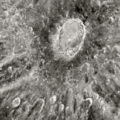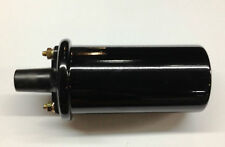
About 150,000 years ago, an anomalous ice age was triggered by an increasingly salty Mediterranean Sea, a development that’s occurring today and may start new ice sheet growth in the next few decades, according to a study at the University of Minnesota. Robert Johnson, an adjunct professor of geology and geophysics, will present his study of the glaciation 150,000 years ago and discuss its implications for today’s climate on Tuesday, Oct. 29, at the annual meeting of the Geological Society of America in Denver.
Johnson is reluctant to predict exactly how global warming and other climate factors will play out, but he said the increasingly salty Mediterranean is a definite warning that Atlantic circulation patterns will change in ways that favor ice sheet growth.
“Global warming may actually assist new ice sheet growth because growth depends less on cold temperatures than on a strong supply of moisture and very heavy snowfall over northern land masses, said Johnson, who earlier this year published his arguments in a book, “Secrets of the Ice Ages.”
The ice age 150,000 years ago was anomalous because it occurred in the face of maximum amounts of summer sunlight striking temperate and tropical latitudes – a phenomenon that the most prominent theory of glaciation can’t explain.
How it works: At the Strait of Gibraltar, deep, salty Mediterranean water flows into the Atlantic and northward as it mixes up into the salty Gulf Stream surface water. Today some of that mixture flows westward into the Labrador Sea Southwest of Greenland, and much of it also flows beyond the Faeroe Islands off Scotland and eventually into the Arctic Ocean. About 160,000 years ago, an ice age was already under way, and the seas east and west of Greenland were very cold. But the salinity of the mixture reaching Labrador made the water dense enough to sink easily when cooled in winter, and the warmer salty replacement mixture kept the seas south of Greenland relatively warm.
“Storms usually track over areas where warm and cold conditions exist side by side,” said Johnson. This temperature contrast with the Greenland ice sheet and other cold areas kept eastward-moving storms to the north. This channelled large amounts of moisture over both European and Siberian areas, causing enormous growth of the ice sheets there.
Today, the formation of sea ice and pack ice in the Arctic Ocean depends on the presence of less salty – and therefore less dense – water near the surface. This density gradient arises from inputs of fresh water from rivers flowing into the Arctic Ocean from Canada and Siberia. The salty flow of the Mediterranean and Gulf Stream mixture tends to inhibit the formation of sea ice and pack ice. The rising salinity of the Mediterranean outflow, as measured by European oceanographers over the last 40 years, tends to increase the Arctic Ocean salinity, reduce the density gradient, and melt the pack ice there – a process doubtless helped by global warming, Johnson said.
The pack ice has thinned by about 40 percent in the last 30 years and may be nearly gone in a few decades, said Johnson. As it melts, the pack ice supplies fresh water to the Arctic Ocean, but this fresh water will be lost once the pack ice is all gone. The result will be a sudden increase in salinity of the Arctic Ocean, with profound effects west of Greenland in Baffin Bay, which is now covered with heavy sea ice almost eight months of the year.
Arctic Ocean water enters the north end of Baffin Bay through small inter-island channels. As this water gets saltier and denser, the expected effect is that in winter, surface water in the bay will cool and sink. This already happens in winter to saltier water east of Greenland, Johnson said. But the sinking water would be replaced by salty water from the wide mouth of the bay to the south. All Baffin Bay water would then remain unfrozen in winter, and the contrast between the warmer ice-free water and the cold land of Baffin Island and Greenland would draw storms from the warmer Labrador Sea into the Baffin area. The result: Northern Quebec and Baffin Island would experience extremely heavy snows. This, said Johnson, is the inferred process that started the last ice age and that may initiate similarly rapid ice sheet growth in a few decades with relatively warm seas near Labrador.
The cause of the increase in Mediterranean saltiness 150,000 years ago is believed to have been a decrease in the tilt of Earth’s axis, said Johnson. This weakened the African monsoons by reducing the difference in temperature between the Sahara Desert and areas south of the equator. The monsoons are driven by this temperature difference, and weaker monsoons 150,000 years ago caused extreme aridity in northern Africa and the Mediterranean regions, resulting in a saltier Mediterranean and stronger outflow at Gibraltar than today. Today, the climate of the Sahara and the Mediterranean is also arid, and much water from the Nile and other major rivers has been diverted for irrigation. These losses increase the salt content of the Mediterranean, a process helped by evaporation losses due to global warming.
“If an increase in salt from the Mediterranean should start the growth of glacial ice sheets in this century, some of the damage caused by global warming might be mitigated,” Johnson said. First, if additional salty water cools and sinks in Baffin Bay, it will carry with it carbon dioxide dissolved from air. This should reduce the net annual addition of carbon dioxide to the atmosphere because, while the sinking water is balanced by water surfacing elsewhere, the water surfacing today sank many hundreds of years ago, when the atmospheric carbon dioxide was less. Second, there is widespread concern that the Greenland ice sheet may melt in the near future, and cooling due to new glaciation in Canada may prevent it. Third, the new glaciation would draw water from the sea, which would counteract the damaging sea level rise that is occurring today.
“The evidence shows that temperature is not the only factor in determining ice ages,” he said. “The conventional Milankovitch theory doesn’t account for shifts in precipitation – which is, after all, the source of ice sheets.”


















Comments are closed.